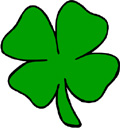St. Patrick's Day
St. Patrick's Day, honoring the 5th-Century Christian leader known as the "Apostle of Ireland," has been an official public holiday in Ireland since 1903 and an unofficial holiday in many other countries before and since. The holiday, which takes place each year on March 17, is primarily a religious holiday in Ireland and usually a secular holiday elsewhere. Irish parades, festivals, sporting events, and church services are common occurrences on the day. Irish-Americans have celebrated St. Patrick's Day since before the American Revolution. In face, the first such celebration in America took place in Boston in 1737. Celebrations in the U.S. include parades, festivals, music concerts, and large gatherings of people wearing green. Many Americans eat corned beef and cabbage to celebrate this Irish holiday. The dish echoes a traditional Irish one that Irish immigrants brought with them to America; however, because the original recipe called for bacon but it was more expensive, Irish-Americans substituted the cheaper corned beef and kept the cabbage.  The association of the color green with St. Patrick's Day is not directly tied to Patrick, since tradition holds that blue was the color most associated with him. However, modern remembrances of Patrick and the role he played in the history of Christianity in Ireland feature the color green. One likely connection is with the shamrock, which is the three-leaf plant that Patrick used to illustrate a key concept of Christianity to native Irish people who believed in other gods. The color green is also associated with spring and rebirth. The Irish flag features one green stripe. The association of the color green with St. Patrick's Day is not directly tied to Patrick, since tradition holds that blue was the color most associated with him. However, modern remembrances of Patrick and the role he played in the history of Christianity in Ireland feature the color green. One likely connection is with the shamrock, which is the three-leaf plant that Patrick used to illustrate a key concept of Christianity to native Irish people who believed in other gods. The color green is also associated with spring and rebirth. The Irish flag features one green stripe.People celebrate St. Patrick's Day in many other countries, including the United Kingdom, Canada, Argentina, Japan, Australia, New Zealand, and almost anywhere that people of Irish descent live or have lived. Particularly large parades take place each year in Dublin, Ireland; Toronto, Canada; Birmingham, London, and Glasgow, U.K.; Buenos Aires, Argentina; Seoul, South Korea; New York City; Boston; and many other cities around the world. The leprechaun, a common symbol associated with things Irish, has nothing to do with St. Patrick. |
|
Social Studies for Kids
copyright 2002–2024
David White




